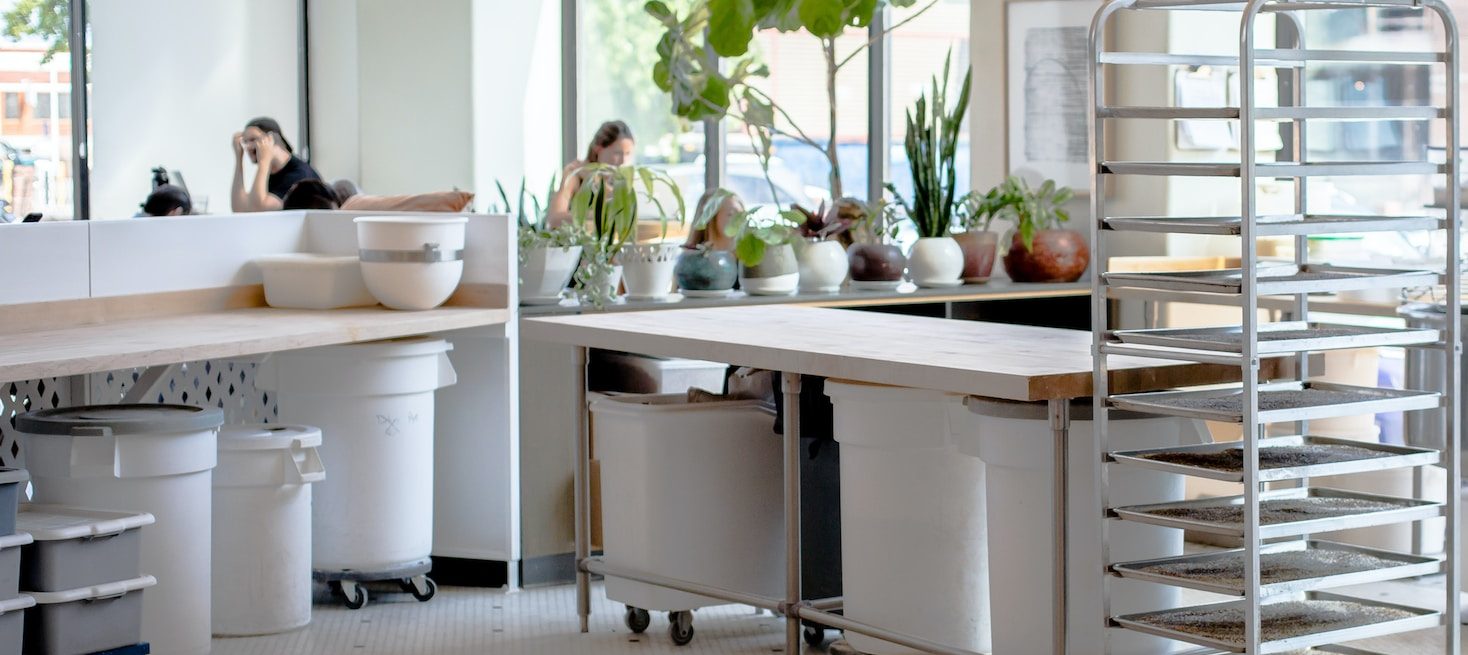How to Choose a Commercial Mixer and Make the Most of It
3 Min Read By Grace Strotman
A commercial mixer can be an invaluable piece of equipment in a restaurant’s kitchen, offering the versatility to create a range of recipes — from sweet to savory. It can also introduce efficiency while providing quality results, so chefs can streamline their operations and offer the best menu items to their customers. It is important, however, to know what to look for in a mixer and how to make the most out of it.
Making the Mixer Choice
The first thing to consider is the type of commercial mixer that is right for the kitchen.
For restaurants making large quantities of bread and pizzas, a spiral mixer is a good choice since it works well for mixing heavier doughs. It is especially well suited for pizzerias making Neapolitan pizza dough. The bowl rotates in both directions as a stationary spiral dough hook kneads the dough, which keeps the dough at a lower temperature. These mixers are also good for pie and bagel dough.
A planetary mixer has a bowl that stays stationary, while the agitators move to incorporate the ingredients. They are available in smaller countertop and larger floor models. This type of mixer is an excellent choice for the restaurant kitchen since it offers a lot of versatility due to the variety of agitators that can be used. These include:
- Flat beater for mashing potatoes and mixing cakes or icing.
- Wire whip for whipping cream and beating eggs.
- Dough hook for mixing breads and pizza dough.
- Wing whip and heavy-duty wire whips for heavy whipping.
- Pastry knife for pastry and pie dough.
Planetary mixers with a hub offer the ability to add a slicer attachment that provides food processing capabilities. Depending on the plate used, it can slice vegetables, grate cheeses and breadcrumbs or shred quick cooking vegetables, salad vegetables and potatoes for hashbrowns. Shredding plates are available from fine to course, depending on the ingredient being processed. The addition of a meat chopper attachment allows for grinding and chopping meat to make sausages and meatballs.
For high-volume restaurants, a cutter mixer can speed up cutting, chopping, mixing and kneading. This equipment functions as a large food processor for making sauces, salsa and coleslaw, but it can also be used to mix dough.
Figuring Out Mixing Needs
When choosing a mixer, it is important to consider how much mixing will take place daily. For example, a standard heavy-duty planetary mixer is good for restaurants that mix fewer hours per day, periodically mix heavy doughs and have multiple applications. A maximum eavy-duty planetary mixer is better for more frequent and demanding use.
Equally important is the volume of mixing that will take place. Spiral mixers are available in capacities ranging from 200 to 440 pounds of dough. Planetary mixers are typically available in sizes ranging from 5 quarts to 140 quarts. For smaller independent restaurants, a 10- or 20-quart standard heavy-duty mixer should meet the kitchen's mixing requirements and they have a price point that is appealing to owner/operators. A 60-quart mixer is popular for higher-volume kitchens. A typical vertical cutter mixer offers 45-quart capacity.
It’s important to remember that buying too large of a mixer can be an expensive and unnecessary investment if a kitchen makes small batches of recipes or mixes infrequently. One that is too small won’t be able to manage the volume of ingredients, which can wear on the equipment and potentially lead to increased maintenance and repairs.
Whatever size or type of mixer a restaurant chooses, chefs and their staff should avoid overfilling the bowl. Doing so prevents ingredients from being mixed thoroughly, which negatively affects the consistency and quality of the finished product. When mixing heavier doughs, overfilling the bowl can also tax the mixer’s motor, causing it to stall and wear on its components.
Lastly, consider what ingredients will be mixed. Manufacturers offer mixer capacity charts for spiral, planetary and vertical cutter mixers that show the amount each of these mixers is capable of handling for specific ingredients and applications. These charts also offer recommendations for which agitators to use for planetary mixers.
Getting the Best Results
In addition to selecting the right size and type of mixer, it is important to follow the manufacturer’s recommendations for operating the equipment and caring for it. Doing so can reduce the need for repairs and extend the life of the mixer, allowing restaurants to continue making great food for their customers.


